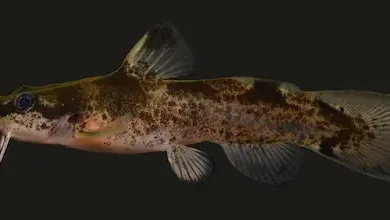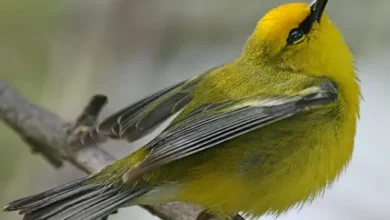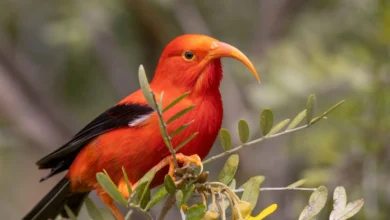Introduction
The Saola (Pseudoryx nghetinhensis), often referred to as the “Asian Unicorn,” is one of the world’s rarest and most enigmatic mammals. Discovered only in 1992 in the Annamite Range of Vietnam and Laos, this critically endangered species has captivated scientists and conservationists due to its elusive nature and striking appearance. Despite its rarity, the Saola remains poorly understood, making it a high-priority species for wildlife conservation.
This article explores the biology, habitat, behavior, threats, and conservation efforts surrounding the Saola, shedding light on why this mysterious creature is on the brink of extinction.
1. Taxonomy and Discovery
Scientific Classification
-
Kingdom: Animalia
-
Phylum: Chordata
-
Class: Mammalia
-
Order: Artiodactyla
-
Family: Bovidae
-
Genus: Pseudoryx
-
Species: P. nghetinhensis
Discovery
The Saola was first identified in May 1992 when a joint survey by Vietnam’s Ministry of Forestry and the World Wide Fund for Nature (WWF) found skulls with unusually long, straight horns in villagers’ homes in Vũ Quang Nature Reserve, Vietnam. Later that year, a live Saola was captured, providing the first photographic evidence of the species.
Its scientific name, Pseudoryx nghetinhensis, reflects its resemblance to oryxes (though it is not closely related) and its discovery in the Nghe An and Ha Tinh provinces of Vietnam.
2. Physical Characteristics
The Saola is a medium-sized bovid with several distinctive features:
-
Size: 80–90 cm (31–35 in) at the shoulder
-
Weight: 80–100 kg (176–220 lbs)
-
Coat: Dark brown with white markings on the face and legs
-
Horns: Long, slender, and slightly curved backward (50–60 cm in length)
-
Facial Features: White patches above the eyes and on the muzzle
Its horns, found in both males and females, are among its most striking traits, often leading to comparisons with antelopes and oryxes.
3. Habitat and Distribution
Range
The Saola is endemic to the Annamite Mountains, a rugged, forested range along the border of Vietnam and Laos. Its habitat includes:
-
Evergreen and semi-evergreen forests
-
Steep, mountainous terrain (300–1,800 meters elevation)
-
Areas near rivers and streams
Due to its elusive nature, exact population numbers are unknown, but estimates suggest fewer than 100 individuals remain in the wild.
Key Protected Areas
-
Vu Quang National Park (Vietnam)
-
Saola Nature Reserves (Laos & Vietnam)
-
Bach Ma National Park (Vietnam)
4. Behavior and Ecology
Diet
The Saola is a browser, feeding on:
-
Leaves
-
Twigs
-
Fruits
-
Ferns
Social Structure
-
Mostly solitary, though occasional pairs (likely mother and calf) have been observed.
-
Extremely shy and secretive, avoiding human contact.
Reproduction
Little is known about Saola reproduction, but evidence suggests:
-
Gestation period: ~8 months
-
Single offspring per birth
-
Calves likely weaned at 6–8 months
5. Threats to Survival
The Saola is Critically Endangered (IUCN Red List) due to multiple threats:
1. Hunting and Snaring
-
Primary threat: Wire snares set for other wildlife (e.g., deer, wild boar) inadvertently trap Saola.
-
Bushmeat trade: Though not a primary target, Saola are killed when encountered.
2. Habitat Loss
-
Deforestation for agriculture and infrastructure.
-
Road construction fragmenting habitats.
3. Small Population Size
-
Genetic bottlenecking reduces reproductive viability.
-
Difficulty in finding mates due to low density.
6. Conservation Efforts
1. Protected Areas & Anti-Poaching Measures
-
Saola Working Group (SWG) leads conservation initiatives.
-
Community ranger programs to remove snares.
2. Captive Breeding Programs
-
No Saola has survived long in captivity.
-
Plans for emergency conservation breeding are underway.
3. International Collaboration
-
WWF, IUCN, and local governments partner to protect the species.
-
Camera trap surveys to locate remaining populations.
Image: Conservationists with camera traps
7. Why Is the Saola Called the “Asian Unicorn”?
The nickname “Asian Unicorn” stems from:
-
Its extreme rarity (fewer than 100 left).
-
Its elusive nature (rarely seen in the wild).
-
Its mythical appearance (long, elegant horns).
Unlike the mythical unicorn, however, the Saola is very real—and on the verge of extinction.
Conclusion
The Saola remains one of the most mysterious and endangered mammals on Earth. Without urgent action, this “Asian Unicorn” could vanish before scientists fully understand it. Conservation efforts must focus on anti-poaching measures, habitat protection, and potential captive breeding to prevent its extinction.
How You Can Help
-
Support organizations like WWF and Saola Working Group.
-
Raise awareness about the species.
-
Advocate for stronger wildlife protection laws.
References & Further Reading
By spreading knowledge and supporting conservation, we can help ensure the Saola does not become a forgotten legend.




